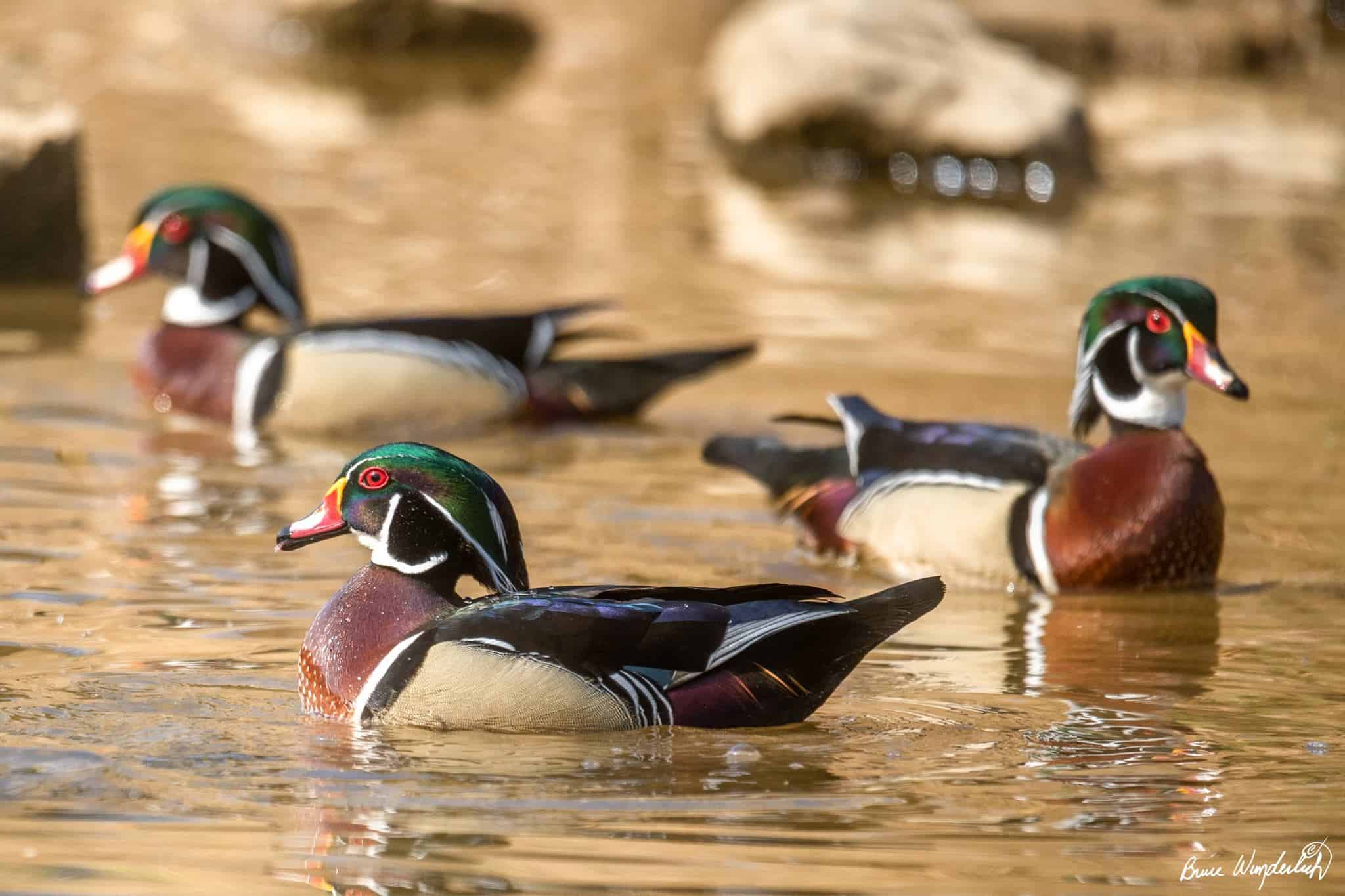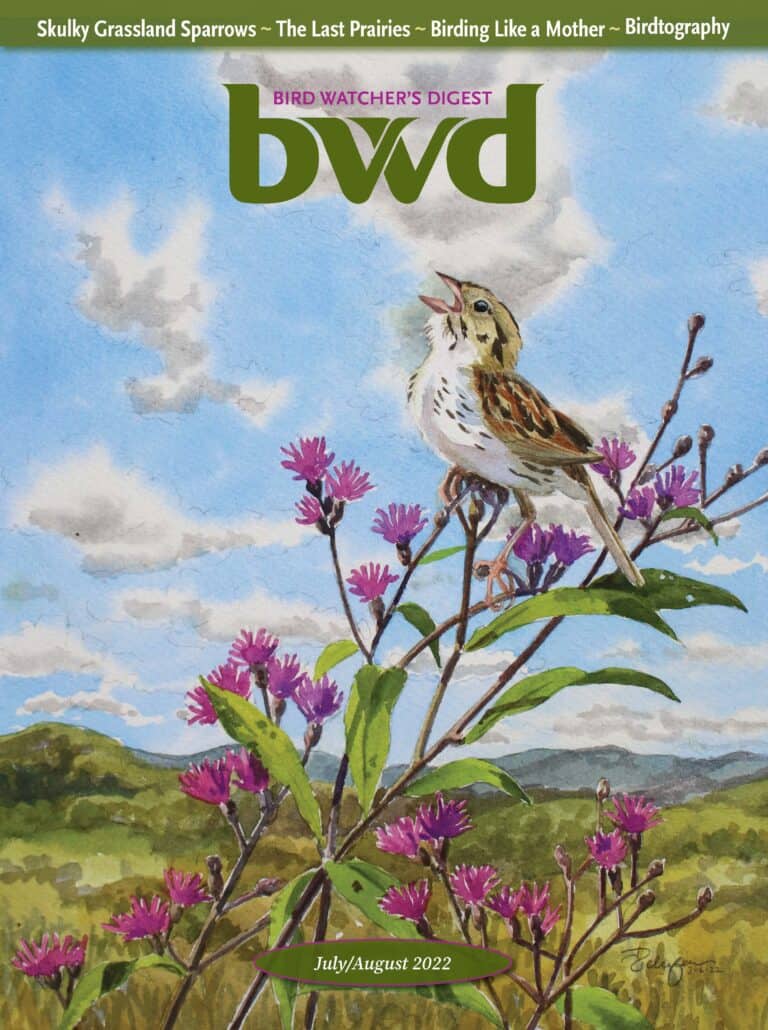
I was explaining how I’m a terrible birder, in that it takes me forever to get on a bird when a fellow participant in the hobby points one out to me. And how those kind souls trying to help me probably get frustrated when I so often give up after a few minutes of trying. Telling me to look to the right or left of a fork in a tree is simply not helpful. There are lots of trees with lots of forks, most of them more or less directly in front of where a person points or directs my gaze. And I typically don’t feel very disappointed if I can’t see a bird. I’m the one invading their habitat, after all. Birds don’t benefit from my presence one bit.

All of this I mumbled to my companion, who had pointed out a bird to me with the reasonable albeit unrealized expectation that I could actually find and enjoy seeing it. I lowered my binocular after gazing pathetically into the treetops along the bank of a creek outside of Williamstown, West Virginia. Minutes earlier, a lone female belted kingfisher had watched us from a nearby, nearly bare tree, perched above the Ohio River inlet into which we’d launched. She flew down and away, chattering the entire time, wanting nothing to do with the amphibious all-terrain vehicle in which we were floating on a lazy Saturday afternoon. The massive flock of Canada geese that had usually greeted us when we visited this patch over the summer was nowhere to be found.
He spotted ducks up ahead shortly after my navel-gazing soliloquy. I once again retrieved the Vortex Diamondback 8×42 (the first binocular I bought after joining the Bird Watcher’s Digest team) from the army surplus pouch (found at a local flea market that takes place every weekend at a tired former department store) strapped to the dashboard. A great blue heron swooped into view as I removed the lens covers, a stunning scene in itself. When I could focus on the ducks, though, I felt that certain thrill that occurs when you realize you’re looking at something more-than-ordinary. These were wood ducks, and there were at least three.
The waterfowl, no doubt disturbed by our presence, swam farther up the creek. Although my companion had cleverly attached a trolling motor to the rear of the vehicle for a quieter experience in the water, some sounds, splashes, and vibrations remain par for the course. We continued on our way, focused more on enjoying the mid-October foliage than seeking out avian wildlife.
The wood ducks appeared again some time later. This time I saw there were at least five of them, both male and female. There weren’t flying away from the stream as the heron had. My excitement grew. My birding apathy diminished.

We rounded a bend. The leaf litter and human litter grew thicker with the shift in the creek’s flow and the partial blockage caused by a downed tree. My companion fought with the trolling motor that was struggling through the debris. Myself, I was looking at wood ducks.
There were eight of them in total, four handsome pairs, doing their slow, back-and-forth-but-always-forward zooms. I’d only ever seen one pair at a time, and on only a half-handful of occasions. The first time had been at Magee Marsh, where BWD editor Dawn pointed out mates far up in a tree, much to my and Redstart manager Angela’s abject disbelief. We were much greener then.
The ducks scooted along, replaced by no fewer than three northern flickers, two hairy woodpeckers, a yellow-rumped warbler, and what I’m 80 percent certain was a hermit thrush on the downed tree and in the brush along the bank. The pileated woodpecker howler monkey hollers I’d heard on the way up were replaced by what sounded like a brown thrasher’s smoochy smack of a call. However, I didn’t see one to confirm and wasn’t sure if that was a possibility in light of fall migration. Perhaps it was only a cardinal.

We humans scooted back the way we came, deciding that we’d had a good jaunt for the day. The skies were promising rain, and the creek was promising more leafy difficulty. My moment of birding bliss ended. I no longer let myself be oblivious to the vehicle’s function. In volunteering to steer for a spell (that reach back to the trolling motor handle can be strenuous, especially from the driver’s side), I relinquished my urge to look at passing birds. Something small with a pale belly hopped around the undergrowth, but I didn’t raise my bins to confirm my suspicion that it was a Carolina wren.
However, I once again let myself abandon my duties when we got back to the stretch of stream where I’d confessed my bad birding moxie. Several small, flitty silhouettes played among the creekside trees. I released the handle to dig out my Diamondback and try to follow the birds. When I could get on one, though, sorrows! Because they were backlit in a graying sky, my entry-level binoculars (a retired line that has since been improved upon with better glass and coatings) couldn’t give me the details I needed. “Blame the binoculars,” my companion intoned.
Not that details would have done me much good, anyway. If these were warblers, as I suspected, they were in their fall plumage. And although I had produced a guide on just this subject as part of my job, the fine points and field marks for the various species had been filed away deeper in my memory than I could access on a lazy Saturday in the wilderness, if not wholly discarded after months of disuse. Terrible birder, indeed.
All told, it was nice to rekindle that spark of birding interest that had cooled and dimmed during the summer doldrums. These rich moments when the colors of the leaves are peaking, migrants can still be found, and the weather’s still pleasant enough to enjoy resident species without much inconvenience are so fleeting and so beautiful. I hope you get a chance to savor them, too, with or without a duck boat.

Looking to Subscribe?
Get 6 print issues of the magazine delivered to your door & free digital access
One Year Print Subscription: $26
(to US or Canada, includes digital access)
One Year Digital-only Subscription: $15




